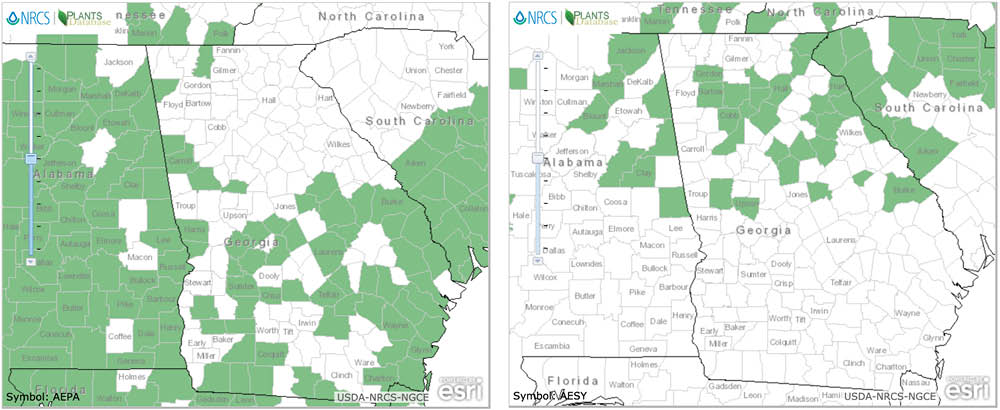Imagine you are a migrating hummingbird winging your way north. As you arrive in Georgia, your tiny body exhausted from a long flight, you spot a large shrub with panicles of tubular red flowers. This is red buckeye (Aesculus pavia), a native shrub whose flower is just perfect for a hummingbird’s long tongue. Its bloom cycle is perfectly timed to support the return of hummingbirds to Georgia.
As you travel northward still, you continue through red buckeye’s range for some time, and the nectar of these blossoms keeps you going even when you can’t find that sugar water that humans dispense for you. Somewhere along the way to Atlanta, you notice a change: the blooms are paler in color than before (but just as tasty). You are entering into the range of the Georgia buckeye, also called the painted buckeye (Aesculus sylvatica). In overlapping areas, you might actually be sipping from a natural hybrid of the two: Aesculus x mutabilis.
If you continue northwest, you re-enter the range of the red buckeye. These shrubby buckeyes have kept you going all through Georgia. Now you also start to enter into tree buckeye territory: the Ohio buckeye (Aesculus glabra) and the yellow buckeye (Aesculus flava) both of which have some presence in North Georgia. But you’ll remember that those part-shade shrubs you found first helped you get this far.
Read more about our 2014 Plant of the Year, red buckeye (Aesculus pavia) on our website. It’s a wonderful shrub for the garden and will help those tiny hummingbirds every spring.



